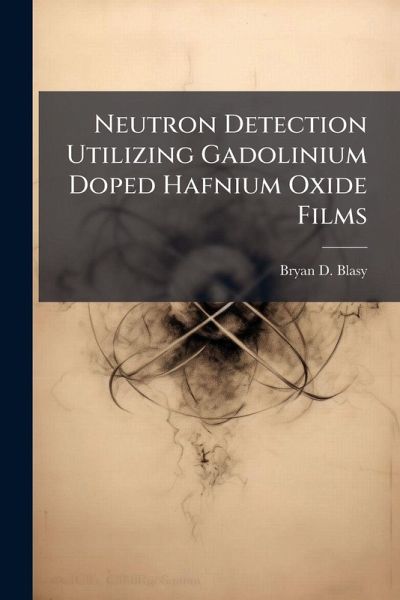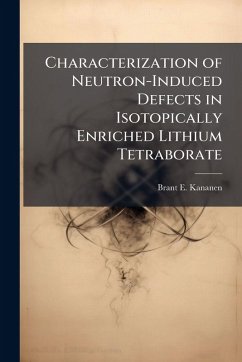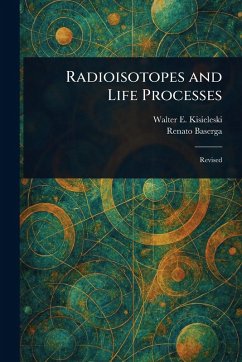
Neutron Detection Utilizing Gadolinium Doped Hafnium Oxide Films
Versandkostenfrei!
Versandfertig in über 4 Wochen
15,99 €
inkl. MwSt.
Weitere Ausgaben:

PAYBACK Punkte
8 °P sammeln!
Gadolinium (Gd) doped hafnium oxide (HfO2) was deposited onto a silicon substrate using pulsed laser deposition. Synchrotron radiation was used to perform Gd L3-edge extended X-ray absorption fine structure (EXAFS) measurements on 3%, 10%, and 15% doped HfO2 samples. The interatomic distances determined from Fourier transformation and fitting the data show Gd occupying the hafnium site in the HfO2 lattice, there was no clustering of Gd atoms, and the Gd ion retains monoclinic local symmetery for all levels of doping. Current as a function of voltage experiments identified the films as having p...
Gadolinium (Gd) doped hafnium oxide (HfO2) was deposited onto a silicon substrate using pulsed laser deposition. Synchrotron radiation was used to perform Gd L3-edge extended X-ray absorption fine structure (EXAFS) measurements on 3%, 10%, and 15% doped HfO2 samples. The interatomic distances determined from Fourier transformation and fitting the data show Gd occupying the hafnium site in the HfO2 lattice, there was no clustering of Gd atoms, and the Gd ion retains monoclinic local symmetery for all levels of doping. Current as a function of voltage experiments identified the films as having poor diode characteristics with high leakage current in the forward bias region. However, a proper bias (0.5 V) for the purpose of neutron detection was identified and applied across the diodes. Using a high, non-varying neutron flux in a nuclear reactor, Gd doped HfO2 was able to be used in a detection system and displayed the ability to detect neutrons. This work has been selected by scholars as being culturally important, and is part of the knowledge base of civilization as we know it. This work was reproduced from the original artifact, and remains as true to the original work as possible. Therefore, you will see the original copyright references, library stamps (as most of these works have been housed in our most important libraries around the world), and other notations in the work. This work is in the public domain in the United States of America, and possibly other nations. Within the United States, you may freely copy and distribute this work, as no entity (individual or corporate) has a copyright on the body of the work. As a reproduction of a historical artifact, this work may contain missing or blurred pages, poor pictures, errant marks, etc. Scholars believe, and we concur, that this work is important enough to be preserved, reproduced, and made generally available to the public. We appreciate your support of the preservation process, and thank you for being an important part of keeping this knowledge alive and relevant.












